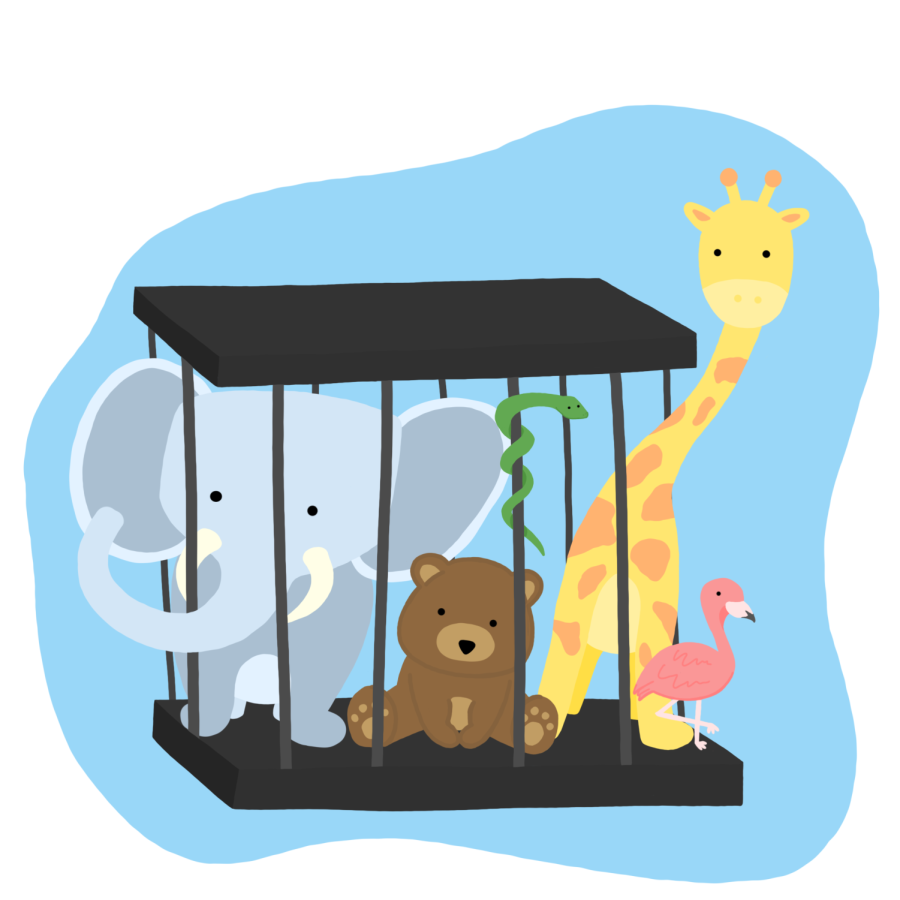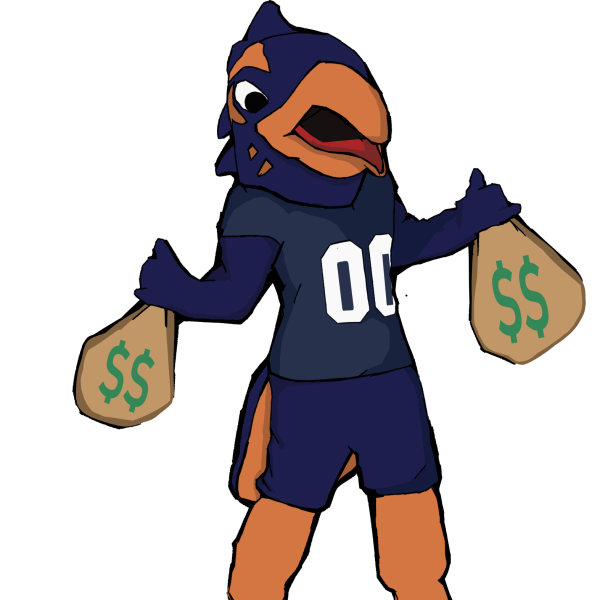Are zoos really saving animals?
April 12, 2022
When it comes to zoos, there are two sides to the issue with a complex gray area in between. On one side, there are zoos whose primary motive is to help bring awareness to endangered species, educate the general public and develop programs to save animals from the brink of extinction. The welfare of the animals in captivity is a top priority for these institutions. On the opposing side, there are the bad apples; the zoos whose motive is to generate a profit without regard for the animals’ mental and physical well-being.
The Greater Wynnewood Zoo featured in the hit Netflix series, “Tiger King,” has earned the moniker “Zoo of Horrors” for its treatment of animals under their care. Kitty Block, president and CEO of the United States Humane Society and CEO of the International Humane Society, conducted undercover investigations with the well-known institution.
“Facilities like Joe Exotic’s … masquerade as rescue or conservation operations, but in fact they breed tigers and subject the cubs, who are torn from their mothers immediately after birth, to stress and abuse. After a few months, when the cubs are too large for close encounters with the public and the opportunity for profit is over, the cubs are caged, sold into the pet trade or die. This cycle of breeding for temporary use leads to a surplus of unwanted animals who languish in horrible conditions,” Block said.
On the inhumane side of animals in captivity, white tigers are a well-known example. White tigers in the wild were extremely rare and the last wild white tiger was killed in 1953. In captivity, the species is abundant, but because of their rarity and their beautiful coat, crooked zoos exploit the mystical creatures for profit. All descendants of white tigers in captivity can trace their lineage from a coupling between a father and his daughter. Because the white coat is recessive and the orange coat is dominant, inbreeding white tigers is common for the cubs to have white coats.
Over 60 years later, this recurring inbreeding has produced tragic results, with most cubs dying prematurely or shortly after birth. Most litters born are small with shorter life spans. The commonality of incestal breeding has resulted in genetic maladies such as vision impairment, malformation of the heart, irregularities in the spine and deformities of the face.
This practice is prohibited by zoos accredited by the American Association of Zoos and Aquariums (AZA). Exploitation still happens in unregulated zoos insidious enough to exploit white tigers to procure a profit.
These shady zoos likely have no barriers between the exhibits and the public. Without barriers, you can pet, touch or hold the animals. This is prohibited in regulated zoos as the process to do so is extremely inhumane and can be dangerous for people if an animal lashes out.
The methods utilized for animals to tolerate constant human contact are exceedingly cruel. The means to do so demand separating the babies from their mothers immediately after birth and raising them among humans. They can never be released into the wild as they do not fear humans and will continually approach them, which can result in them being shot to protect livestock and people.
These private institutions do not provide educational information; no research or conservation takes place. The distinction between an ethical and unethical zoo is profit. In pursuit of greed, there is no limit to the misdeeds and exploits committed; the line of immorality is continually crossed and morality is never questioned.
The difference between disreputable zoos and reputable zoos is like night and day. Exceptional zoos are centers of conservation, research and education. The welfare of animals is of prime importance.
In regard to conservation, there are zoos that have specialized programs for wildlife rehabilitation; these programs utilize scientific research to allow the best possible rates of survival after release. The public will never see these programs as these animals must remain wary of humans and if need be, employees normally approach them in a disguise reminiscent of the animal under their care.
A program in Zimbabwe, known as the African Lion and Environmental Research Trust (ALERT) is specially designed and is highly successful in releasing lions into the wild.
“The program involves multiple stages, which eventually sees the release of wild offspring from previously captive adults. First, lions that have been habituated to humans are released into a large enclosure with prey species to hunt. Next, those animals (which are never handled by humans again) eventually form a pride and produce new cubs. Then those cubs, who have grown together and formed social bonds, are eventually released as a pride,” said Dr. Chris Draper, a chartered biologist and European Co-ordinator for the Global Federation of Animal Sanctuaries.
Other wildlife rehabilitation programs can have difficulty and largely depend on many factors, as is the case for polar bears, who live in an extremely harsh environment. The mother normally teaches the cubs how to survive and it is nearly impossible to teach cubs born in captivity these survival techniques.
“Other kinds of bears seem to be reasonably successful when released back to the wild. But it depends so much on the individual animal: the age it was captured, whether it was bred in captivity, its experiences in captivity, any kinds of trauma, health, early nutrition. There is just no magic recipe,” Draper said.
For public zoos, the highest honor one can receive is accreditation from The Association of Zoos and Aquariums (AZA). “The Association of Zoos and Aquariums (AZA) is a 501(c)3 non-profit organization dedicated to the advancement of zoos and aquariums in the areas of conservation, education, science, and recreation . . . AZA-accredited zoos and aquariums meet the highest standards in animal care and welfare.”
There are legitimate zoos out there whose mission is to save the animals, and their health is the highest priority. Spreading awareness and educating the populace about creatures that live on our planet is all the more necessary to prevent further extinction. Not all zoos are bad, and with any issue, there tends to be a broad stance taken that categorizes the good underneath the bad. However, looking deeper, there are institutions out there that care deeply about the animals that inhabit this Earth despite the unfortunate outliers.













